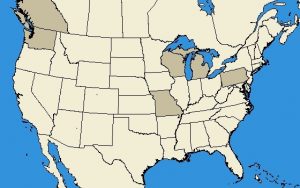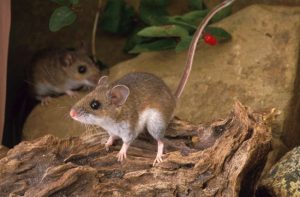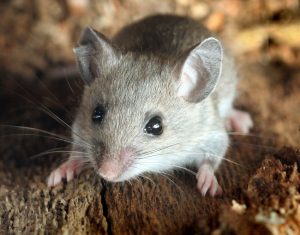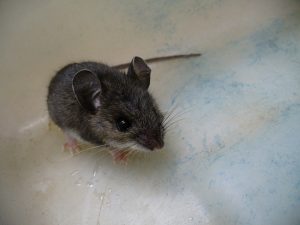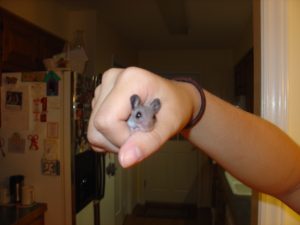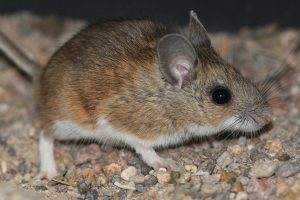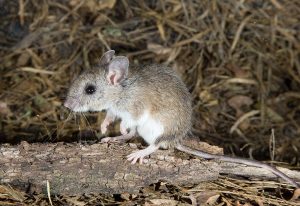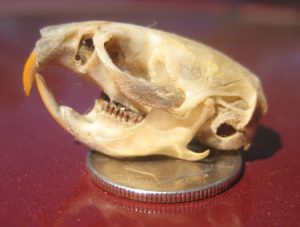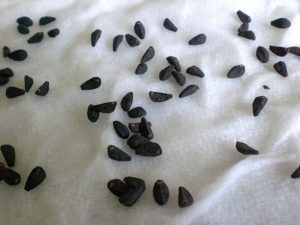Deer Mouse
Deer mice are small, white footed rodents that are quite prevalent in North America. Although deer mouse is the common name given to Peromyscusmaniculatus, most species belonging to the genus Peromyscus are generally referred to as the deer mouse. These tiny mammals are a concern since they are the carriers of Lyme disease and Hantavirus, which are deadly to humans.
Scientific Classification
| Kingdom | Animalia |
| Phylum | Chordata |
| Class | Mammalia |
| Order | Rodentia |
| Family | Cricetidae |
| Genus | Peromyscus |
| Scientific Name | Peromyscus maniculatus |
Quick Information
| Other Names | North American Deermouse |
| Subspecies | Some common ones are P. m. gracilis (forest deer mouse), P. m. bairdii (prairie deer mouse), P. m. nubiterrae (cloudland deer mouse) |
| Similar to | Peromyscusleucopus (white footed deer mouse) |
| Identification | Size: 12-22 cm long, tail length is 4.5-10.5 cm Weight: 10-24 grams Color: Dark/light brown back; white undersides and legs; the tail is whitish at the bottom but darker at the top |
| Distribution | Throughout southern US, Canada, and northern and central Mexico; extending to the coastal regions in East Texas |
| Habitat | Grasslands, woodlands, bushy areas, swamps, and bogs; coniferous, deciduous, and northern boreal forests |
| Lifespan/Life Expectancy | Less than 1 year; captive animals can live upto 8 years |
| Diet | Omnivorous; seeds, leaves, fruits, fungi, and arthropods like caterpillars, heteropterans, and spiders |
| Communication/Perception | Through senses of touch, smell, hearing, and vision; make squeaky sounds, emit pheromones, give warning signals by drumming the front paws up and down, and mark their territories |
| Adaptations | Their large ears and beady eyes help in hearing and sight; the markings and coloration of their body make them difficult to detect in their natural environment |
| Number of offspring | 1-9 young; 3-5 babies are common |
| Number of litters per year | 3-4 |
| Breeding season | Can reproduce year round, but usually, occurs from March-October |
| Gestation period | 22-26 days |
| Predators/Competition | Snakes, minks, martens, skunks, weasels, bobcats, domestic cats, foxes, coyotes, owls, ringtails |
| IUCN Conservation Status | Least Concern |
Behavior
The deer mice are nocturnal animals adept in climbing trees. However, they remain mostly active on the ground, spending most of the time around food cache and nests, which consist of twigs, leaves, stems, roots, and other plant materials.Some construct their own burrows below the ground level while others build nests in tree hollows, stumps, bush piles, and logs.
These are somewhat social and may form small groups comprising an adult male, several mature females, and their babies. During winter, they may huddle together and become torpid in their nests to conserve heat.
Mating and Reproduction
Breeding in deer mice is largely determined by the availability of food rather than by season.Female deer mice exhibit more than one estrus during the breeding season, each cycle lasting about five days.Adult males can have more than one mating partner at the same time while a female can pair with several males.After the gestation period, female deer mice give birth to a litter of pups, which are nested and kept warm with the help of the male partner.
Life Cycle
The young are born blind and naked and needs to be cared for by the parents. They open their eyes 13-19 days after birth and develop full coats by the second week. Weaned at 18-24 days, the juveniles become independent in a few weeks. Although they reach adult size by 6 weeks of age, weight gain continues thereafter. Sexual maturity is achieved after 48 days.
Interesting Facts
- Unlike the house mouse (Musmusculus), the deer mouse has a bicolored, slightly furry tail. Moreover, its ears and eyes are comparatively larger than those of the house mouse.
- Most young deer mouse disperses after weaning and may travel up to 152 m from its place of birth in order to establish its own territory.
References:
Published on December 19th 2016 by admin under Coniferous Forest Animals.
Article was last reviewed on 5th December 2024.


